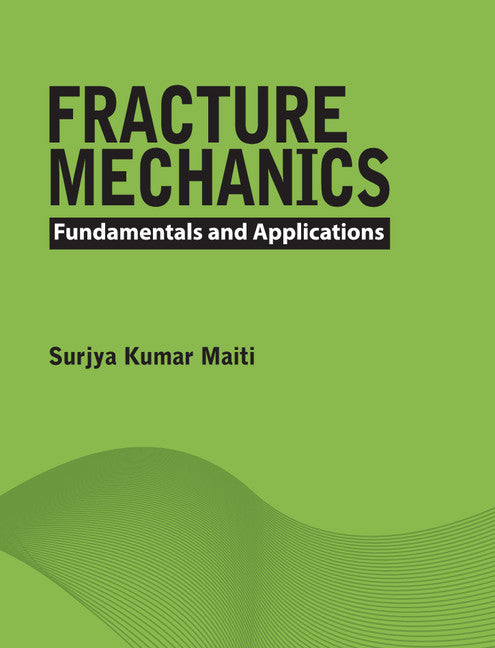Freshly Printed - allow 4 days lead
Couldn't load pickup availability
Fracture Mechanics
Fundamentals and Applications
The book offers detailed treatment on fundamental concepts of fracture mechanics. The text is useful for undergraduate students, graduate students and researchers.
Surjya Kumar Maiti (Author)
9781107096769, Cambridge University Press
Hardback, published 1 October 2015
295 pages
24.8 x 18.7 x 2 cm, 0.7 kg
Fracture mechanics studies the development and spreading of cracks in materials. The study uses two techniques including analytical and experimental solid mechanics. The former is used to determine the driving force on a crack and the latter is used to measure material's resistance to fracture. The text begins with a detailed discussion of fundamental concepts including linear elastic fracture mechanics (LEFM), yielding fracture mechanics, mixed mode fracture and computational aspects of linear elastic fracture mechanics. It explains important topics including Griffith theory of brittle crack propagation and its Irwin and Orowan modification, calculation of theoretical cohesive strength of materials through an atomic model and analytical determination of crack tip stress field. This book covers MATLAB programs for calculating fatigue life under variable amplitude cyclic loading. The experimental measurements of fracture toughness parameters KIC, JIC and crack opening displacement (COD) are provided in the last chapter.
List of figures
List of tables
Preface
1. Introduction
2. Linear elastic fracture mechanics
3. Determination of crack-tip stress field
4. Crack opening displacement, J integral, and resistive curve
5. Determination of stress intensity factors
6. Mixed mode brittle fracture
7. Fatigue crack growth
8. Elastic plastic fracture mechanics
9. Experimental measurements of fracture toughness data
References
Index.
Subject Areas: Mechanics of fluids [TGMF], Mechanics of solids [TGMD], Materials science [TGM], Mechanical engineering & materials [TG], Maths for scientists [PDE]


